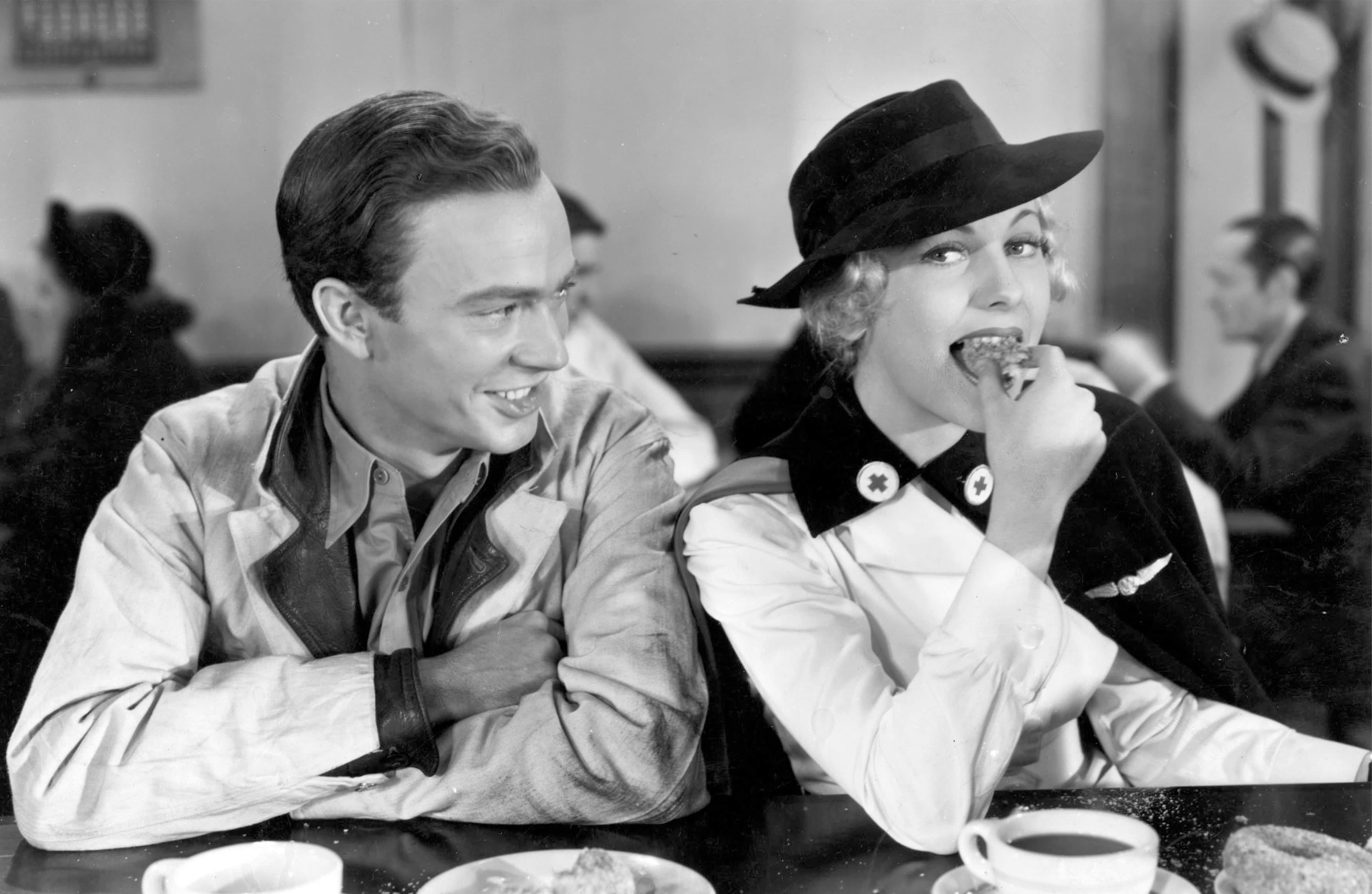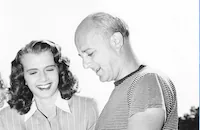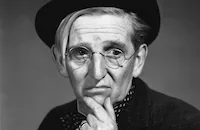The Man Who Found Himself

Brief Synopsis
Cast & Crew
Lew Landers
John Beal
Joan Fontaine
Philip Huston
Jane Walsh
George Irving
Film Details
Technical Specs

Synopsis
When a plane piloted by Dr. James Stanton, Jr., a young Park Avenue surgeon, crashes in a storm, killing passenger Helen Richards, the wife of a fellow surgeon, a "love tryst" scandal hits the newspapers. Even though the charges are false, Jim's angry plea of innocence fails to sway the medical board, which includes his conservative father, Dr. James Stanton, Sr., and they vote to place him on an indefinite probation. Rebuffed by his father, Jim is then rejected by his socialite fiancée, Barbara Reed, who refuses to leave New York with him and become a country doctor's wife. Disillusioned and alone, Jim leaves for California, eventually landing in Los Angeles, where he meets up with an old pilot friend, Dick Miller, who finds him a job as an airplane mechanic at Roberts Airlines. At the airport, Jim, now calling himself Jones, attracts the attention of Doris King, a pretty nurse who works on board the Roberts' ambulance plane.
Doris, sensing Jim's pain, encourages him to open up but is met with stubborn silence. When she learns that Jim is a pilot, she maneuvers to have him fly the ambulance plane during an emergency call. Then, after Jim proves himself a skillful pilot, Doris convinces Mr. Roberts to give him a regular flying assignment. Out of gratitude to Doris, Jim accepts the new job, which requires him to renew his pilot's license. Curious about the mysterious new pilot, newspaper reporter "Nosey" Watson follows him to the license renewal office and discovers his real name.
After Doris learns about Jim's identity from Nosey, she talks Roberts into assigning Jim to the ambulance plane. Still bitter, however, Jim refuses to fly the ambulance and denies Doris' accusations that he is a coward. Doris, determined to return Jim to the medical profession, leaves for New York, where she solicits Barbara's help in meeting Jim's father. After telling Jim's story, Doris at last convinces Dr. Stanton to reconcile with his son and leave with her for Los Angeles. When the train on which Doris and Dr. Stanton are riding derails outside of Los Angeles, the ambulance plane, which Dick has tricked Jim into flying, is called. Jim, seeing his exhausted father fighting to save wounded passengers, finally puts aside his bitterness and dons his surgeon's gloves.

Director

Lew Landers
Cast

John Beal

Joan Fontaine

Philip Huston

Jane Walsh

George Irving

James Conlin
Frank M. Thomas

Diana Gibson

Dwight Frye

Billy Gilbert
Alec Craig
Stanley Andrews
Crew
G. V. Atwater
J. Robert Bren
Samuel J. Briskin
Howard Campbell
Alice F. Curtis
Denzil A. Cutler
Edmund L. Hartmann
Jack Hively
J. Roy Hunt
Thomas Lennon
Van Nest Polglase
Cliff Reid
Vernon L. Walker

Film Details
Technical Specs

Articles
The Man Who Found Himself
The first of Fontaine's B's, and her first starring role, was The Man Who Found Himself (1937), in which, at age 20, she plays a flying field nurse - a role later to be reflected in Fontaine's real life when she worked as a nurse's aide during World War II. In the film she is in love with a young doctor (John Beal) who is trying to hide his identity because of a scandal in which he is involved. Seems the doctor, in pursuing his off-duty passion as an aviator, crashed a plane in which his passenger, a married woman, was killed. Maintaining his anonymity becomes more difficult after Nurse Fontaine determines to lead him toward redemption. Matters come to a head aboard a "flying hospital" where the doctor is the only person aboard who can perform a life-saving operation. For added urgency, the plane is about to crash!
Some critics felt a flaw in Fontaine's performance was that she seemed to be vocally imitating Katharine Hepburn, with whom she had just worked in Quality Street (1937). Still, she received some kind notices including Kate Cameron's comment in The New York Daily News that "Miss Fontaine is as blonde as Miss [Olivia] de Havilland is dark, but she has the same charm and poise which makes her sister one of the most promising younger actresses in Hollywood."
According to biographer Charles Higham, Fontaine had a great time during her early years at RKO, which had the reputation of being the most relaxed studio in Hollywood: "She enjoyed the bustling, gossipy atmosphere...Full of fun and laughter, Joan was entirely at home with the RKO family."
Higham also notes, however, that Olivia de Havilland was less than pleased with her sister's newfound success in films. "It has ruined the close-knittedness of our family life," de Havilland told a columnist at the time. "It's bad enough, first to have me as an actress, with hours upset and schedules changed; now it seems as if when I have a moment to rest she is at the studio, and the sweet closeness of our relationship has slipped away." The sisters, who would soon stop speaking to each other, went on to share one of Hollywood's most famous family feuds.
Producer: Cliff Reid, Samuel J. Briskin (uncredited Executive Producer)
Director: Lew Landers
Screenplay: G.V. Atwater, J. Robert Bren, Edmund L. Hartmann, Thomas Lennon, from story Wings of Mercy by Alice F. Curtis
Cinematography: J. Roy Hunt
Art Direction: Van Nest Polglase
Editing: Jack Hively
Cast: John Beal (Dr. James Stanton Jr.), Joan Fontaine (Doris King), Phillip Huston (Dick Miller), Jane Walsh (Barbara Reed), George Irving (Dr. James Stanton Sr.), Dwight Frye (Hysterical patient).
BW-68m.
by Roger Fristoe

The Man Who Found Himself
Quotes
Trivia
Notes
The working title of this film was Wings of Mercy, which was also the title of Alice Curtis' unpublished story. According to Motion Picture Herald, Diana Gibson had been a child star in the "silent" movies, but that claim has not been confirmed. Joan Fontaine enjoyed her first starring role in this film and was billed on screen as a "new RKO screen personality." Her photo credit appeared at the end of the viewed print, an unusual placement for the time. In a modern interview, Fontaine reported that she got the part of "Doris" after Katharine Hepburn, with whom she had appeared in a small role in Quality Street (see below), recommended her to a "B" movie producer on the RKO lot. Hollywood Reporter production charts add James Conlin, Douglas Wood and Edward Van Sloan to the cast, but their participation in the final film has not been confirmed.














